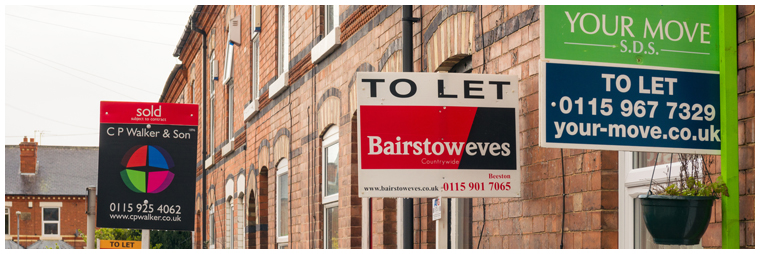Calling all buy-to-let landlords. The new tax law that comes into force in April 2017 isn’t the only nail in the rental property coffin. Even more nails (4 more to be precise) now seem to have been added!

Nail Number 1: New tax rule on rental income
At the moment you have to pay tax on your rental income after deducting allowable expenses (including your mortgage interest). It means that, if you’re a landlord paying higher (40%) or additional (45%) rate tax, you can claim tax relief at your highest rate.
From the 5th April 2017, a new tax rule is being phased in so that, from April 2020, tax relief can only be claimed at the basic tax rate (20%).
The National Landlords Association believe that 440,000¹ landlords are going to be forced up a tax bracket when this new rule comes into effect. Why the rental income tax changes affect both basic and higher rate tax payers
Nail Number 2: Harder to get a mortgage
The Prudential Regulatory Authority (PRA) have tightened up the requirements lenders must place on buy-to-let borrowers:
- Lenders must now use a mortgage interest rate of 5.5%, irrespective of the actual rate (even if it is lower);
- Landlords must now have a rental income that is at least 125% of the interest rate. In other words, a mortgage payment of £1,000 per month would require a rental income of £1,250 per month.
But here’s the stinger! The PRA has said that lenders can assume that all borrowers are high rate tax payers, which in practice means that lenders could easily require a 145% rental income coverage². In other words, a mortgage payment of £1,000 per month would require a rental income of £1,450 per month…WOW!
Nail Number 3: Wear and tear costs
In the past, landlords could (broadly speaking) deduct 10% of their rental income to allow for general wear and tear. This has now well and truly been buried; only actual costs can be claimed from April 2016.
I have spoken to many clients who have found it difficult for a buy-to-let property to cover its costs, particularly where there is little equity. With the new tax legislation, that’s getting even harder and certainly more onerous…and it gets worse.
Nail Number 4: Extra stamp duty
Have I mentioned the extra 3% stamp duty tax when purchasing a second property that is valued over £40,000?
Nail Number 5: Higher rate of capital gains tax
It doesn’t get any easier when you come to sell the property either. On the sale of your rental property, you are liable to capital gains tax (CGT).
Granted, you may be able to offset some of the costs of selling and you do, of course, have a personal CGT allowance (£11,100 for the 2016/17 tax year).
Only the gains in excess of your personal allowance are subject to tax. Typically, capital gains tax is 10% for basic rate tax payers and 20% for high rate tax payers. Not so for rental properties!
Capital gains tax rates on the sale of a rental property is 18% for basic rate tax payers and 28% for high rate taxpayers.
Do you think owning a buy-to-let property still makes good financial sense? Let us know your thoughts by adding a comment below.